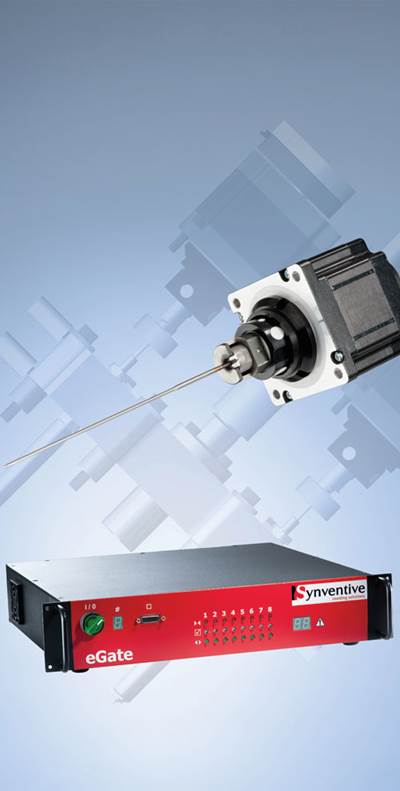Hot Runners
Controller Considerations for Your Hot Runner
A quality hot runner system is critical to the injection molding of consistent, high quality parts. One of the most important performance aspects of a hot runner system is its temperature uniformity. The temperature should be consistent across the hot runner system and should not vary with time. Even slight variations in temperature can have a negative impact on part quality and consistency.
Suppliers of high quality hot runner systems are aware of the importance of temperature uniformity and therefore design towards this goal. However, a well-designed hot runner system does not function without an often overlooked component, the temperature controller. Regardless of how well the hot runner system is designed, its temperature uniformity can suffer if paired with an inadequate controller whether or not the controller’s display shows any indication of a problem.
Properly controlling the temperature of a hot runner system is a dynamic task. During injection, shear heat is generated in varying amounts throughout the hot runner system. How well the temperature controller responds to this sudden non-uniform addition of heat will determine if the various segments of the hot runner are able to consistently return to the same temperature prior to the next shot. Failure to do so will result in shot-to-shot inconsistencies. Although there are many factors that determine how well a temperature controller performs, the most critical factors are the control algorithm, response time, tuning, type of output voltage control and thermocouple resolution.
All temperature controllers use an algorithm to determine how much power to send to the heaters based on the difference between the temperature reading and set-point. Most controllers use a PID algorithm to adjust the power output to maintain set-point while others use the more advanced PIDD control, which allows the controller to stabilize back on set-point more quickly after a temperature disturbance.
A controller’s response time is determined by how often the controller compares the temperature reading to the set-point and makes a power adjustment. The faster the response time, the quicker the controller will be able to respond and the less impact temperature disturbances will have.
The various sections of a hot runner have very different thermal response characteristics. The manifold block, for instance, has a large mass and sees relatively little shear heating. The nozzle tips, on the other hand, have a small mass and are subjected to large heat sinks and a lot of shear heating. The different controller zones must respond very differently depending on which section of the hot runner they are controlling. Tuning of the control zones to properly set the algorithm constants is extremely important. Some controllers have preset constants that can be changed manually if a zone doesn’t appear to be controlling properly. Other controllers will tune themselves when first turned on; and still others continuously tune themselves to better control the hot runner after it has reached set point and is being subjected to the thermal variations caused by the molding process.
There are two basic types of output voltage control. Many controllers use an on/off type of control and constantly turn full voltage on and off, controlling by changing the percentage of the time that full voltage is being applied. This can create temperature oscillations and shorten heater life. Other controllers use a phase angle firing, always sending power but varying the voltage output to the desired value (see Figure 1).
The last element to consider is thermocouple resolution, which defines to what increments the temperature reading is measured. Some controllers measure to one degree Fahrenheit while other controllers can measure and respond to differences as small as one tenth of a degree.
Because the temperature controller plays such an important role in the performance of the hot runner it is important to do your homework when selecting the most appropriate one for your application.
Related Content
Machining Center Spindles: What You Need to Know
Why and how to research spindle technology before purchasing a machining center.
Read MoreTreatment and Disposal of Used Metalworking Fluids
With greater emphasis on fluid longevity and fluid recycling, it is important to remember that water-based metalworking fluids are “consumable” and have a finite life.
Read More6 Ways to Optimize High-Feed Milling
High-feed milling can significantly outweigh potential reliability challenges. Consider these six strategies in order to make high-feed milling successful for your business.
Read MoreLaser Welding Versus Micro Welding
The latest battle in finely detailed restoration/repair of mold materials.
Read MoreRead Next
Understanding Electric Valve Gates
What the right electric valve gate system means to the moldmaker and his customers.
Read MoreAre You a Moldmaker Considering 3D Printing? Consider the 3D Printing Workshop at NPE2024
Presentations will cover 3D printing for mold tooling, material innovation, product development, bridge production and full-scale, high-volume additive manufacturing.
Read MoreHow to Use Strategic Planning Tools, Data to Manage the Human Side of Business
Q&A with Marion Wells, MMT EAB member and founder of Human Asset Management.
Read More








_300x250 3.png;maxWidth=300;quality=90)
.jpg;maxWidth=300;quality=90)















